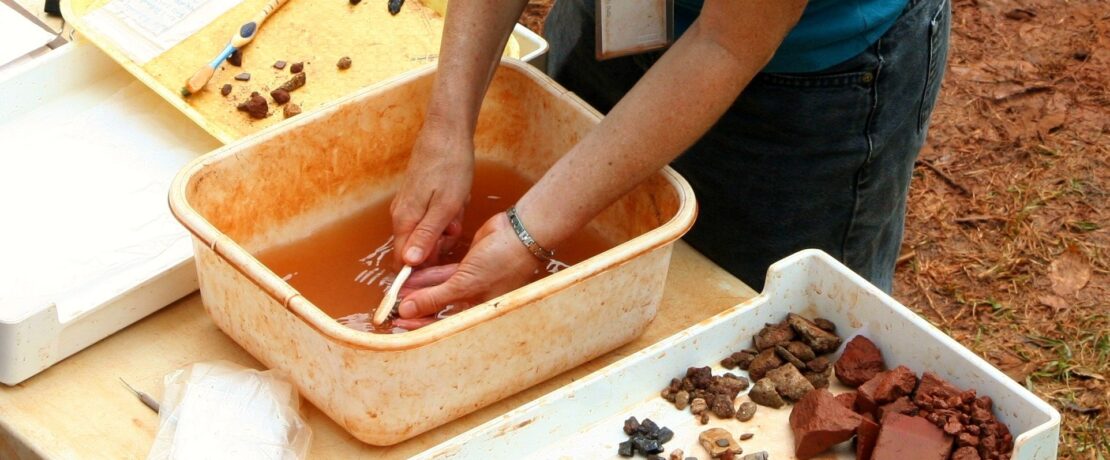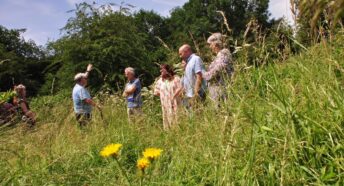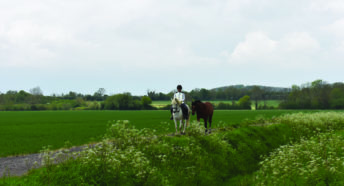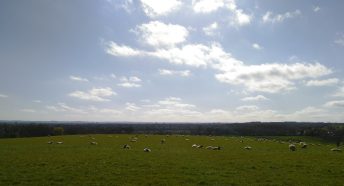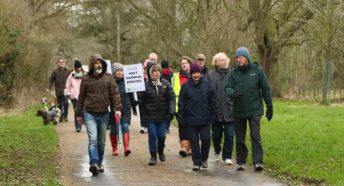Digging into development led archaeology
In July 2023 Houghton Regis hit the headlines. Archaeological work at the Linmere housing development had uncovered 25 Mesolithic pits, a nationally important prehistoric discovery.
The dig is an example of development led archaeology. The story of this kind of archaeology begins with the uninspiringly named ‘Planning Policy Guidance Note 16: Archaeology and planning’ which was issued in 1990. This required developers to assess, protect and record any archaeological remains using a contractor of their choice. Before the guidance note was published some developers would do this voluntarily but other archaeology was being lost. Most archaeologists in England work on development led projects, which form the majority of investigations. In other words, most of the archaeology happening today is because of development.
The process
There are two ways in which archaeologists can be employed within this system. Local authorities employ them as advisors, these are the experts who assess and review applications from developers. They will provide advice and oversight on what needs to be done to protect or record the site. Other archaeologists are employed by commercial contractors who do the site evaluations, excavations, recording and post excavation work.
The process begins with a local authority archaeologist assessing applications against the records of heritage sites in the area. If a full assessment is needed then the developers will employ a contractor. The first stage is desk based, looking at maps, photographs and documents can help the team understand what work has been done previously and what might be there. Evaluation work will then test what the team have theorised by putting in test trenches and conducting surveys using techniques like geophysics to reveal what is under the ground. The sites identified will then be excavated, and finds or features will be recorded. Through this work, and the post excavation stage which is focused on conservation, analysis and processing, the archaeologists build up a picture of what the area looked like and how people lived.
Local archaeology
Two digs have taken place at Linmere. In 2019 (when the site was still known as HRN1) Albion Archaeology worked on one area for Lands Improvement Holdings Ltd and in 2021 MOLA (Museum of London Archaeology) excavated another part of the site for Bellway Homes. Both digs uncovered pits dating to 8,500 – 7,700 years ago. The 25 pits are laid out in multiple straight lines, clustered around former stream channels. They are round with very steep sides, some flaring out at the bottom into a wider base. The archaeologists found animal bones including aurochs (a wild species of cattle), marten, deer and boar. The auroch bones were radiocarbon dated and helped the archaeologists fix the date of the pits. There was also evidence on the bones that people were eating the cattle. There is no consensus on the use of the pits but they might have had some ritual or special significance. Both Albion Archaeology and MOLA are continuing their work in the lab. They are currently focused on analysing environmental samples to learn more about the plants growing nearby and the ancient landscape.
Other finds come from the Bronze Age, Iron Age and Roman periods. The houses, farms and burials have yielded finds like drying ovens and an inscribed flagon. The finds will eventually go to Wardown House Museum in Luton.
MOLA are involved in a second local dig, as they are working on the National Highways A428 Black Cat to Caxton Gibbet Improvement Scheme. Major infrastructure projects like this require the same archaeological consideration as housing developments. They’ve found several roundhouses from the Iron Age and Roman period, there is evidence of brewing, bread making and pottery firing, as well as jewellery and evidence of trade with countries such as Spain and France. The team are doing lots of engagement work through the creation of learning packs and events for communities and schools.
Strengths and weaknesses
It’s clear that development led archaeology is a crucial source of employment for archaeologists. The findings help increase our understanding of the past and give archaeologists access to sites that might otherwise not be explored, but there are some weaknesses to the system.
Concerns from the profession centre around threats to local authority posts from spending cuts and the way that the process is driven by the need to meet planning requirements in a cost-effective way. This means there is less archaeology being done that is trying to answer specific research questions. The volume of finds puts pressure on museum storage and cataloguing services, which are often run by local authorities with tight budgets. Any further liberalisation of planning regulations could leave the archaeological protections weakened, either by accident or design.
Community groups are often the first to raise concerns about developments and their impact on the landscape. In Houghton Regis many residents were already aware of the rich history of the area having found arrowheads and pieces of Roman pottery in their gardens. The chalk meadows and hills made it a good site for settlement from the earliest times.
It is unusual for development led archaeology to result in the preservation of features, with recording preferred. However, residents have questioned whether, given the significance of the pits, they should be preserved in situ.
Balancing the wishes of archaeologists, developers and communities is always going to be difficult. If the development at Linmere wasn’t happening then the discoveries might never have been made, but local people are justifiably concerned about the way that the area’s green spaces are disappearing. The results of the dig illustrate why it is important to safeguard the place of archaeology in the planning system, but leave unanswered any questions that residents might have about the pace and scale of development.
